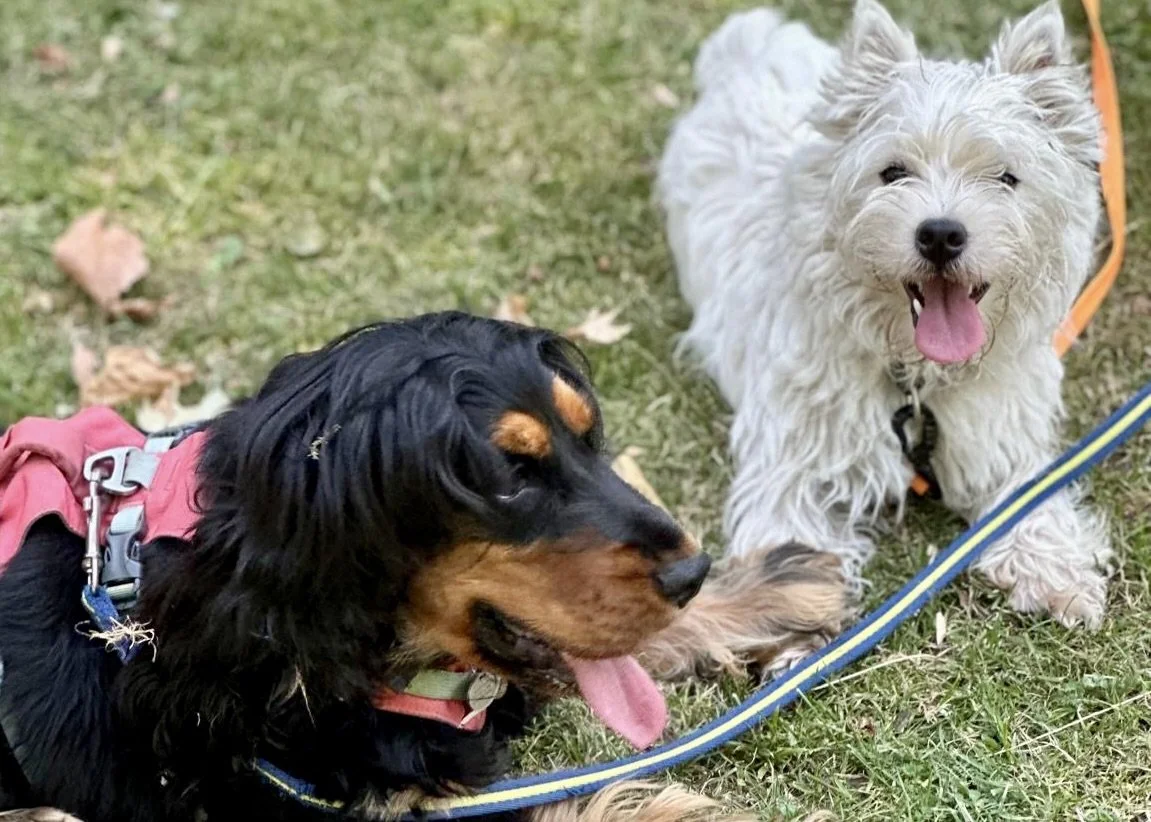Safe Play Signals
Play with other dogs helps puppies learn how to respond appropriately in different interactions. Building socially appropriate behaviour around other dogs begins by supervising their first encounters, checking for safe play signals, so they can build up a bank of positive experiences.
You’ve practised some ‘walking nicely’ exercises on a loose lead, and started to walk where your puppy can see other dogs (working on keeping the focus on you in the beginning). Now you’d like to progress beyond a three-second sniff hello and introduce them to some calm, friendly dogs. But what does healthy dog play look like?
Your own dog’s play style
First things first, keep in mind your own dog’s play style. Watching other dogs can help us to identify some differences in approach when it comes to play. Breed traits may play a role, but there are no hard and fast rules. Start with a friendly dog you know, or see regularly and choose a quiet, safe space. Always ask the other dog parent’s permission and it’s equally important that the other dog looks calm, comfortable and interested too.
Safe play signals
While all dogs are unique to some extent in their individual expressions, in general there are some ‘safe play signals’ to look out for when you introduce new friends. These could include:
Hamming it up
This includes loose soft bodies and exaggerated movements and even sounds. An example is the joyful rocking horse movement that some dogs do.
Copycats
When both dogs make the same gesture at the same time, we can say that one dog’s behaviour directly reflects the other’s. Think of the classic bow, with both dogs facing each other in a mirror image.
Even Stevens
This is about how each dog evens out the game, for example by matching the other dog’s size or style. It’s sometimes referred to as self-handicapping when for example, a larger dog lies down to play so that the shorter one is on the same level.
Yin Yang
Harmony and balance come about from swapping roles frequently and essentially taking it in turns. One doodle might be the ‘chaser’ and one the ‘chasee’ and then they switch (often running around in crazy circles).
Frequent Tea Breaks
In the example above, after a bit of a chase game, one dog might flop down, or start sniffing the ground. After a few moments, one may gesture that it’s back to the work and the game might start again.
In addition to watching both dogs’ carefully, it’s a good idea to proactively interrupt play after a few moments initially. Generally this is easiest when both pet parents agree to call their dogs away simultaneously, reward good listening and release them back to the game if appropriate.
Set ups
Multiple short and sweet encounters with various shapes and sizes of well-socialised dogs can help to build confidence and resilience, and set the tone for future interactions. As with other social experiences, aim for quality above all.
Carefully supervised puppy classes can offer good opportunities to work on relaxed and comfortable behaviour around other dogs, and rehearse socially appropriate behaviours in the context of different interactions. They may even make some friends for life.

